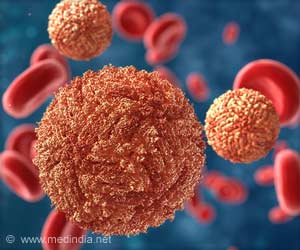
‘Wearing a facemask is one way to help protect yourself during any kind of respiratory outbreak. ’
Tweet it Now
Public health officials are continuing to learn more about this new virus, which so far has sickened one person in the U.S. Although more cases are likely both abroad and here in the U.S., people shouldn’t panic. Here’s what we know so far about this brand new virus:
What is a coronavirus? What is a novel coronavirus?
It probably originated in an animal (maybe a snake, according to one recent report), but developed some mutations that let it “jump” to humans. This particular virus from Wuhan is being called the 2019 novel coronavirus or 2019-nCoV.
Where and how did the Wuhan novel coronavirus begin?
Advertisement
These markets have been known to transmit viruses before. So many people interacting with live animals that are often slaughtered on site is just the right environment for viruses to make that interspecies jump to humans. Sometimes the virus doesn’t spread well between people (like the H5N1 “avian influenza”), but other times the virus also develops the ability to spread from person to person. This is how SARS, another novel coronavirus, started in 2003.
Advertisement
So far, there’s limited information about 2019-nCoV, including how easy it is to spread and how dangerous it is. But understanding these two important facts will really help us determine how much of a risk this new virus poses. So far, we know this virus can be transmitted from person to person and it is probably passed by coughing and other close contact.
Close contact is a vague term that means a lot of things to different people. But in the case of other novel coronaviruses, it means being within about six feet of someone for a prolonged period of time without wearing recommended personal protective equipment such as a disposable facemask. It could also be having direct contact with infectious secretions of someone who has a case of the virus. For example, you could touch a surface contaminated by someone’s cough or snot and then spread the virus to your own face or mouth without even realizing it. That can sound scary, but it’s important to know that influenza is also transmitted the same way. It’s a good reminder to make sure we’re washing our hands frequently, covering our nose and mouth when we sneeze and staying away from people who are coughing. And while we are on the topic: stay home when you are sick. No one wants novel coronavirus, influenza, or a common cold.
Is this coronavirus deadly?
The numbers are changing rapidly and we don’t yet have a clear picture of how many people are sick or how many have died. Until we get a clearer picture of these two things, the jury’s still out. That said, we do know people have died from this virus. Based on the information I’m seeing, it looks similar to SARS in a number of ways — except for the fact that it’s likely less deadly, but more transmissible.
Have there been cases of the Wuhan novel coronavirus cases in places other than China?
Yes. So far, cases have been reported in other Asian countries as well as at least one here in the U.S. It’s a reasonable expectation that the number will grow across the globe, due in no small part to the fact that China is a densely populated country and there’s massive travel taking place right now for Lunar New Year celebrations.
What are the symptoms of the Wuhan virus?
We’re still learning more about this novel coronavirus, but we know it typically causes flu-like symptoms including a fever, cough and congestion. Some patients — particularly the elderly and others with other chronic health conditions — can develop a more severe illness with a dangerous pneumonia.
How do you treat patients with this virus? Can you vaccinate against it?
Things like antibiotics are designed to kill bacteria, not viruses. So typically doctors can treat the symptoms, but not the virus itself. Chinese doctors and scientists are testing the effectiveness of already existing antiviral medication, but nothing looks really promising. There’s no vaccine yet, but scientists are working on that too. Unfortunately, a vaccine will take more than a year to develop. So in the meantime, we need to focus on preventing spread of the infection and supporting those who do get sick.
How do you screen patients to see if they’re infected with the coronavirus?
At UChicago Medicine, our teams are following guidelines from the U.S. Centers for Disease Control and Prevention. That means we’re asking any patient who has respiratory symptoms and a fever if they’ve traveled to the affected area in the past two weeks or been in close contact with someone with a known or suspected case.
Patients who answer yes will immediately be given a facemask and put in an isolation room, which has negative pressure to keep airborne germs inside. Then, they’ll be tested for the specific virus. Turnaround time on those lab tests is about four days. People will need to remain in isolation until they’re cleared.
We’re also instructing our clinical teams to follow standard infection control protocols. So our doctors, nurses and other clinical staff will wear gear like gowns, gloves, masks and eye shields. That’s what they’d do with anyone who has something like the flu and it’s the same steps we followed during the SARS and MERS outbreaks. We’re also reminding everyone to make sure to wash their hands regularly and avoid touching their faces — that’s good practice any time of the year, but especially during flu season.
What should you do if you think you’re infected?
If you haven’t been to the affected region or been near someone who’s sick, you’re likely OK. January and February are rough months for all sorts of respiratory ailments because colds and influenza are common. That said, if you meet the CDC’s criteria, reach out to your doctor right away and call ahead so someone can meet you outside to give you a facemask to help limit the spread of any germs.
Will wearing a facemask keep you safe from the Wuhan coronavirus virus, particularly if you're heading to an airport like O’Hare where passengers are being screened for the virus?
It can certainly help keep droplets of other people’s mucous and saliva out of your mouth and nose. However, it’s still really important you clean your hands, avoid touching your face and think carefully about how practical it will be to keep that facemask on! You’ll need to remember to clean your hands anytime you’ve touched the outside of your mask because it can get contaminated too. Otherwise you’ll eventually just get whatever’s on the outside of the facemask on the inside.
Source-Newswise









